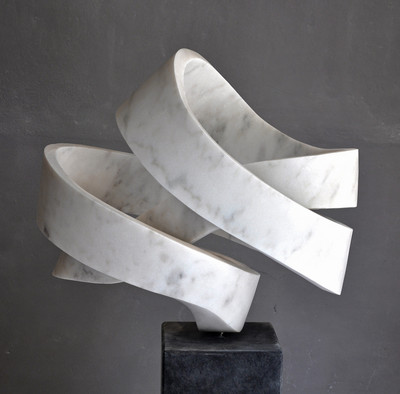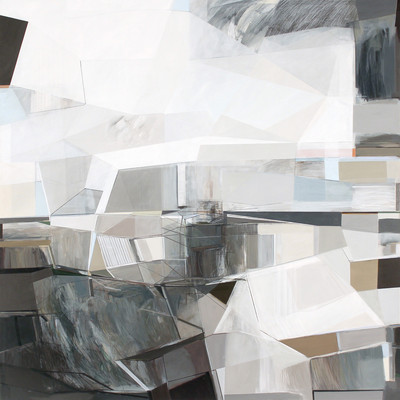FROM GEOMETRY TO THE CONCEPT
Jan 23, 2019
art madrid
Kreisler, Schmalfuss, Sâo Mamede, Shiras and Kur Art Galleries
Since the beginning of the last century, especially after the important Russian Constructivism movement and the mythical Bauhaus School, there have been many creators who have continued working on geometric patterns either by their infinite combinations and artistic, although sometimes purely aesthetic, social or conceptual potential. In this new edition of Art Madrid you can enjoy a very particular scene of the most modern geometric abstract art.
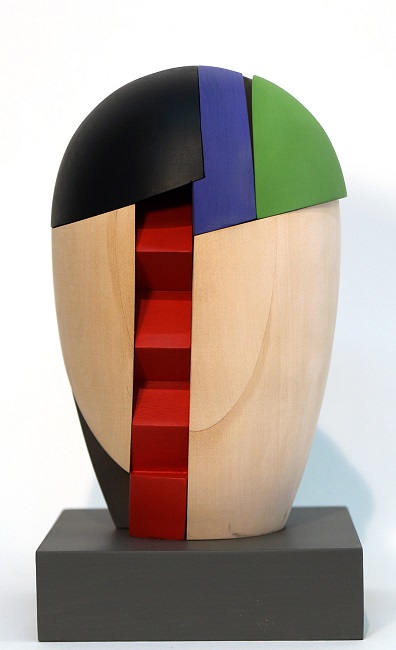
In this sense, the works of five artists stand out within the selection presented by the Kreisler Gallery (Madrid). The work of Ramón Urbán is marked by a pure and resounding formal synthesis, essentiality always impregnated by a strong emotional character that pieces like “Sigo en la sombra lleno de luz” (2018) shows, presented in an accurate dialogue with the sculptures of the series "Reconstructión" (2018) by Carmen Otero. Sculpted in some of the most beautiful woods, they are works in which the designs of the Bauhaus School resonate -now more than ever in consonance with Alma Siedhoff-Buscher's famous designs- here embodied in modular portraits that the artist composes and decomposes delicately.
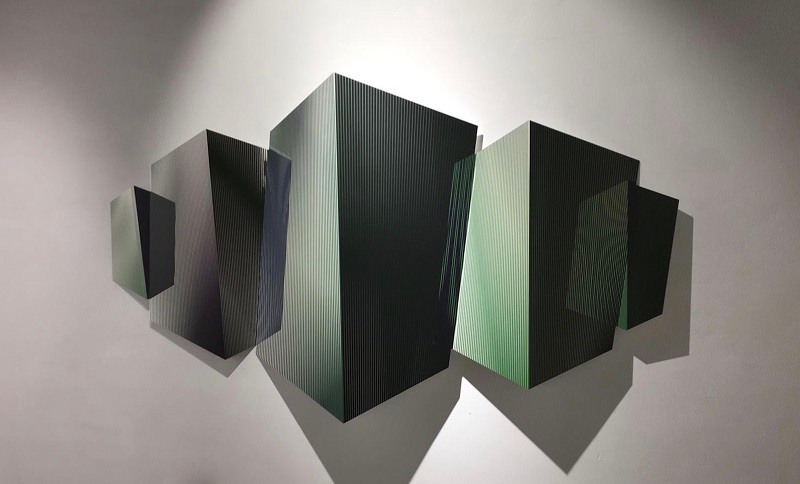
Very different are the formal investigations of Miki (Guillermo Gutiérrez), oriented towards the dominance of the spatial properties of the void: his monochromatic bronzes are rhythmic, whimsical and present twisting forms. Also geometrical and apparently volumetric are the works of Juan Gerstl, while the paintings by Gerard Fernández Rico capture fluid evoking. Kreisler also includes in its proposal personal works, very characterized by a narrative component, of two artists: on the one hand, the daily dreamed stories of Liliana Golubinsky, and on the other, the more colourful and amusing, made by the versatile Sawe.
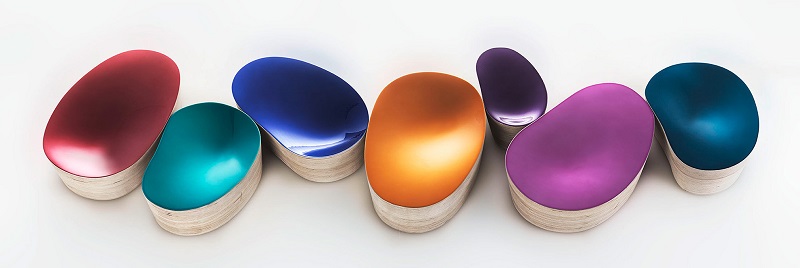
More geometric creations are presented with Schmalfuss (Berlin), a gallery that presents some of the celebrated “objects” and more recent works by Willi Siber, always lacquered and bright. Equally radiant are the steel sculptures by Carlo Borer, with rounded, sensual, even sometimes voluptuous shapes, in which the spectator will be able to find his distorted reflection, similar to those presented by Jörg Bach, works composed from energy centres to which their volumetric termination always return.

A very different way of working industrial materials is that of sculptor Thomas Röthel, more interested in the rectilinear profiles, most of the times interrupted by distorted and curved elements that question the rational logic. In addition, in the Schmalfuss space you can see the expressionist paintings of the painter Cristina Canale; and the latest sculptures by Oliver Czarnetta, mysterious stories encapsulated in resin in which he reflects once more on the passing of time and our ways of perception.
The São Mamede Gallery (Lisbon / Oporto) arrives at Art Madrid with a wide abstract and geometric languages proposal. Some of these are sculptures in marble by Georg Scheele and Matthias Contzen, minimalist abstractions of nature by Scheele and more organic and meticulous works by Contzen. Thousands of either steel rods or piano strings make up the structural pieces of David Moreno that, although volumetric as the artist himself affirms, are pieces made “in the purpose of drawing sculptures”. The pictorial commitment of the Portuguese gallery is also led by abstraction: recent works such as Susana Chasse or Rui Tavares, centered in the line, the layout and the possibilities of a small color palette, together with the paintings of Gil Maia, where the palette is extended and the textures become leading roles. São Mamede Gallery proposal is closed with two more symbolic and very different authors: the gestural González Bravo and the more dreamlike Ana Maria.
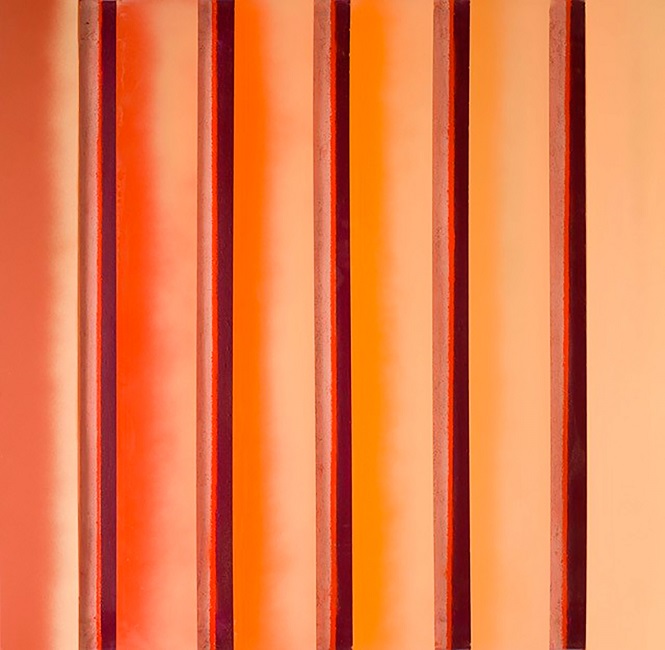
Shiras Galería (Valencia) also offers quite a broad exhibit that consists of the works of six artists from Valencia. In its space, you will see the iron pieces of one of the pioneers of the so-called New Spanish Sculpture, Miquel Navarro. An artist undoubtedly connected with the creators of the Avant-garde. Through their work, we can delve into their personal and distinctive vertical geometrical precision. The latest works by Nanda Botella are also determined by vertical compositions; while the expressive brushstroke of Juan Olivares appears to disrupt all this order. The pictorial gesture, the brushing or scraping, passionate “emotional traces” dominate his colourful paintings, more recently also decomposed and framed in methacrylate.
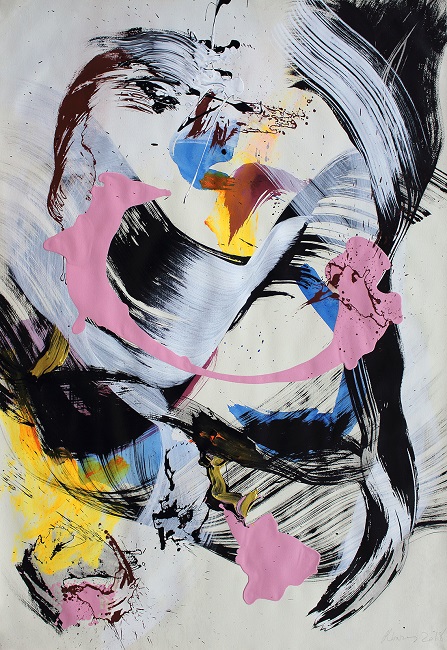
The diverse proposal of Shiras is completed with three very different painters. On the one hand, the essentiality of the round shapes, dominated by flat colours, which continue to distinguish the oils made by the great painter Rosa Torres.On the other hand, we have the oil paintings of José Saborit, landscapes of essential horizons where the painter demonstrates his excellent ability to capture atmospheres. And finally, the gallery presents Horacio Silva’s paintings on sheet metal, a symbolic approach in which the author highlights the sensitive qualities of this cold material.
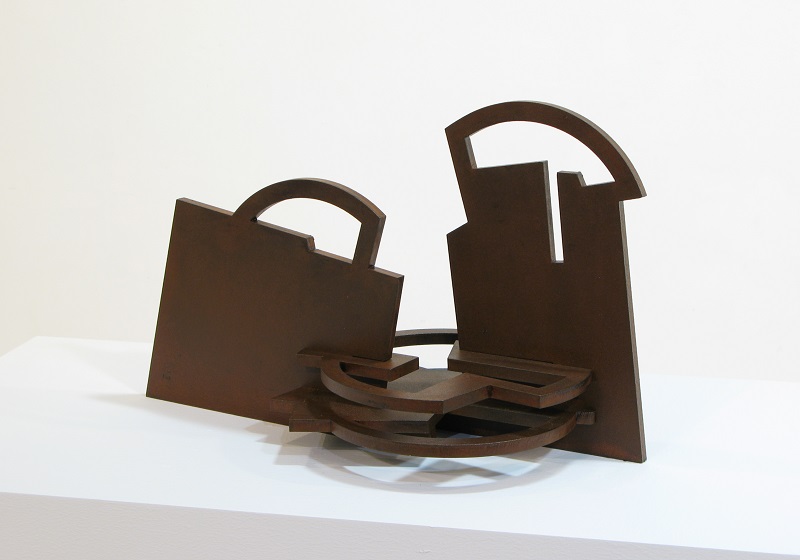
Perhaps the most absolute geometric proposal is that of Kur Art Gallery (Guipúzcoa), featuring only local artists, great followers of the unique Basque creation of the twentieth century. We will see the volumetric collages, works in weathering steel, of Íñigo Arregi, canvases in which he continues to investigate the ways in which geometric forms are interconnected and interwoven. Likewise, the zinc pieces of Iñaki Olazaba are presented, absolute in their presence as in their contours; also part of the sculptural work of the landscape painter Aitor Etxeberría. Kur closes its exhibit for Art Madrid with two painters: J. Ramón Elorza, of which they present some of the more expressive works, featuring floating geometric objects; and Bingen de Pedro, who will surprise us again with his architectural trompe l'oeil. As the artist explained, when working on several canvases at the same time, contaminations arise between them, revealing relationships born from the way in which he orders and places the canvases, a random method that provides the final paintings with an impressive volume.
In short, an extensive group of artists that work from geometry and that we can enjoy in this unique occasion in the new Art Madrid edition.

